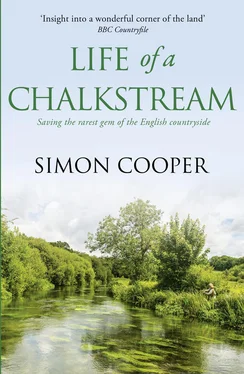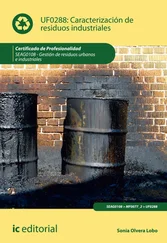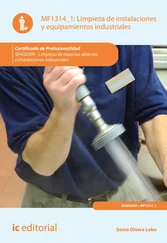There are two ways to restore a river: the easy but expensive and the cheaper but hard. The easy but expensive way involves signing up an ecological consultant who will start by carrying out a painstaking survey (at your cost) of the river and surrounding land. Every tree will be plotted, the curvature of each bend delineated and the depth of the pools plumbed. Soil and water samples will be analysed, flow rates monitored and the wildlife censused. In return for a mighty fee you will receive a mighty document with maps, drawings, graphs, commentary and appendices. You’ll read it. Actually you won’t – you will read the two-page executive summary at the front and glance through the rest. Fortunately your fee includes a presentation, so you head for the consultancy offices. Having been ushered into the boardroom by a receptionist you are then glad-handed by the team. Everything is very exciting and the possibilities immense . You can only agree, but how do I do it, you ask. At this point the meeting gets serious. Sitting across the table from you is the Chief Executive, who takes a copy of the report and places it squarely on the table in front of you.
‘May I be frank with you, Mr Cooper?’
My advice to you at this point is to say no and leave; no good can ever come with a person who opens with this line. But you are curious, so you invite the man to continue. He opens by telling you what you know already. The report on the table is the perfect guide to do-it-yourself restoration. Everyone around the table knows this, but our wily Chief Executive casts a fly into your path he knows you will take.
‘How much were you planning to spend on the project?’ he asks innocently. You quote a number, faintly embarrassed that you thought it could be done for so little. He purses his lips. ‘Here’s the thing,’ he says. ‘You will do an OK job with that budget, but this is such a very exciting project, the potential so immense , that we should think big. Let’s quadruple your budget, apply for funding, and in the end you’ll only have to dip into your own pocket for a fraction of what you originally thought.’
The lure of his fly is too much and you rise to it like the greedy chap you are. The thought of twenty grand’s worth of work for the cost of five is too much to resist. Leaving the room an hour later you have been truly hooked and landed. The consultants are delighted (but not surprised) with a new contract to seek out funding and manage the project when the grants roll in. You are of course still on the hook for their fees if the funding never shows up, but that is a discussion left for another day.
But I don’t much like easy and expensive. It takes too long, the finished job is never as good, and it seems a bit immoral to me that half the money will go to consultants, however expert. And quite frankly, where is the fun in handing the project over to strangers? I wanted to get my hands dirty: stand in the river, look upstream and with a trout’s-eye view of the world fine-tune the work as I went along.
But all this was still ahead of us when my team and I gathered in August to make plans for North Stream’s restoration. It was not the best month to do our kind of survey – the undergrowth at its most dense, the flow almost non-existent – but we could see enough to make some educated guesses. The work was going to be done by Steve, Dan, myself and a team of irregular helpers.
Steve is the closest thing we have to a full-time river keeper. A retired fireman who looks forty but is in fact fifty-five, he runs triathlons just for the hell of it. He can, and does, work all day felling trees, cutting weed and hammering in fence posts. He is in fact more of a coarse angler, and Gavelwood sort of inherited him when some local lakes closed down.
Dan is young. We tease him for being young and he mocks us for being old. In his early twenties, Dan is on a sabbatical year from his university ecology course. I have a feeling he may have dropped out for good, but it is a suspicion I have kept to myself.
The irregulars are a band of loyal fishermen and locals who simply like to help. They turn up as they wish, or Steve will put out a call when he needs some extra hands. It seems to work and every few months I put some cash behind the bar at the pub for an evening of merriment. Work on the river next day is sparsely attended.
On that particular August morning Steve, Dan and I had gathered at Bailey Bridge, a steel latticework bridge of the same name that was invented by the British army. You used to see them all over the river valleys at one time, but most have rotted and rusted away. Built of light steel and wood, in sections small enough to be lifted into place by hand, they were ideal for bridging meadow streams. Designed to take the weight of a tank, they were much loved by farmers, not least because they were easy to ‘liberate’ from the nearby military camps on Salisbury Plain if you drank with a friendly sergeant major.
Our bridge looked to me like it was getting towards the end of its life, but we estimated that by replacing a few of the wooden boards and repainting the metalwork we could eke a few more years out of it. I had my doubts about its inherent strength but Steve was prepared to test it out by the simple act of driving a tractor and laden trailer over it. Sometimes he worries me.
The first decision we needed to make was whether to clear one or both banks along North Stream. Both sides were equally overgrown, and there are merits whichever way you choose to go. In sheer practical terms opting for a single-bank restoration halves not just the work required for the initial clearance but also regular maintenance in the years to come. With our tight timetable it was an attractive proposition, but ultimately we had to decide on what was best for the wildlife, the river and the fishing.
Stepping off Bailey Bridge and towards the stream, our path was blocked by chest-high stinging nettles. Nettles are no great friends of ours – sure, they are much loved by caterpillars, who feed voraciously on them, but for the river keeper and angler they are a menace. They grow fast, crowd out more useful bankside plants and sting like crazy. Fortunately getting rid of them is not hard, at least if you have someone like Dan to do the work. Nettles are nitrogen addicts – in their effort to run wild they suck every last drop of nutrient out of the ground. But when they die back in the autumn the rotting stems and leaves put nitrogen back into the soil ready for next year. However, cut the nettles down and rake away the cuttings and you deprive the next generation of their nitrogen fix. Other species soon encroach on the ground left bare and new plants thrive in place of the nettles. For Dan a couple of weeks with a scythe and rake were on the cards.
Beyond the nettles and bordering the stream was the scrubby woodland that ran the length of North Stream. On both banks it was 10–15 yards wide, because some years earlier it had been fenced off. The fence was pretty much all but gone, save for a few posts and rusting strands of barbed wire that would no doubt trip us up at some point. The main growth was really stunted hawthorn, which had done us something of a favour in the absence of the fence, by keeping the cattle away from the banks and out of the river. Pretty in its own way, and home to the hawthorn fly, we mulled over how many of these bushes-cum-trees should stay, be trimmed or cut down. I am a huge fan of hawthorn. It is the constituent element of every hedge in the chalk valleys and in April its vivid lime-green leaves and white or red flowers are the first tangible proof of spring’s arrival. Admittedly the flowering bushes do emit the most awful stench, which makes you think there is a rotting corpse under every hedgerow, but once you know what it is it does not seem that bad.
Читать дальше












